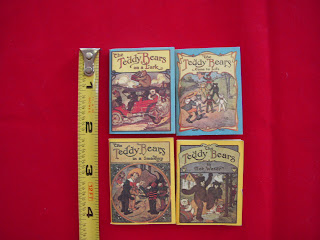
Just so you know upfront -- my blog is not about to be renamed Books, Art, Life and a Dog. I am strictly a cat woman, but I find myself at the moment sharing my office with a very large boxer named Max. Initially it was an uneasy alliance which I agreed to only because my daughter is in her friend’s wedding this weekend and she and her boyfriend are here for the festivities. They arrived late Friday afternoon, got all gussied up, and immediately made tracks for the rehearsal and its accompanying dinner, leaving me alone with the formidably large Max. I had met Max once before when Caitie and Joe were in college and Caitie brought him for a visit, memorable mostly for its short duration. The late, great Mickey took one look at Max and ricocheted off the walls.
But now Mickey is gone, Max is back, and we are left to make the best of it. While I am not by any means panting (pardon the pun, but this dog sounds like a heavy breather on the phone in the middle of the night) for a boxer of my own, I have to admit that Max is actually okay. As dogs go, he’s a real mensch. He sits when you tell him to, gets off the couch when you say “Down, Max!”, shows a remarkable talent for catching flying food in his mouth, and follows me around like a puppy. In fact, we’ve bonded so well that in less than 24 hours he’s shown me two extravagant gestures of affection. Last night he terrorized the pizza delivery man for me. The poor guy stood at the bottom of the steps and held the box out to me, an inconvenience which forced me to go most of the way down, holding Max at bay while juggling pizza and payment, but I completely understood his fright. You’d have thought from the cacophony of barking and growling that I was being protected from a serial killer.
Then this morning I answered the phone, sat down to take the call, and wound up with a 78 pound dog in my lap. There were also two instances of him racing around the backyard only to crash head first into the screen on the patio door, but we won’t get into that. Dogs live large – I get this, I even admire it -- but there’s something so restful about an aloof, lazy cat.
Having worked all day with the Heavy Breather, who is at last sleeping on the guest room bed, I’ve made a few additional observations. Large dogs do not work well in small offices surrounded by teetering piles of books. Large dogs seem to slip around on hardwood floors like wannabe ice skaters. And – here’s the deal breaker -- large dogs (or at least this large dog) do not seem to have a natural affinity for books. A cat will climb delicately over the piles, jump in the boxes, play hide and seek in the shelves, stretch out languorously on a folio sized art book and take a nap, and when all else fails, ignore you. Dogs demand regular care and attention and whimper and whine until they get it. Cats also possess — and this includes the late, great Mickey, who had decidedly thuggish characteristics – the soul of a poet. Large dogs (or at least this large dog) have the soul of an athlete, which I guess in its way has a certain poetic quality too.
Nevertheless, there are many, many very good reasons why booksellers have traditionally opted for cats. Max explained all of them to me this weekend.
















